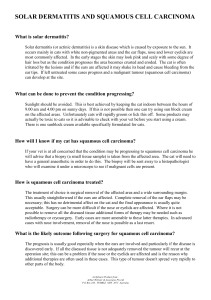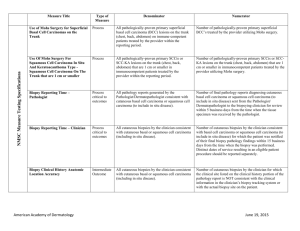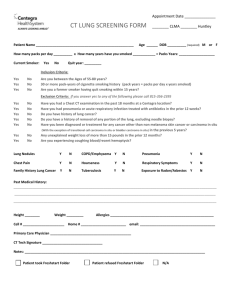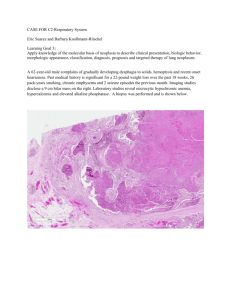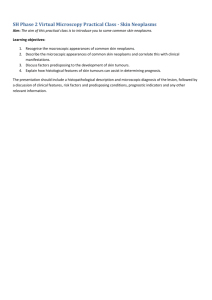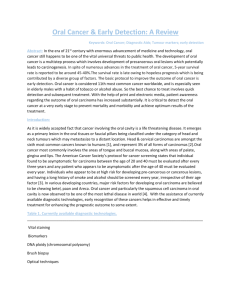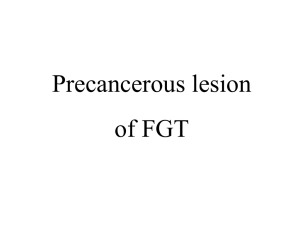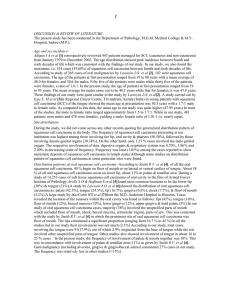Carcinoma In-situ
advertisement
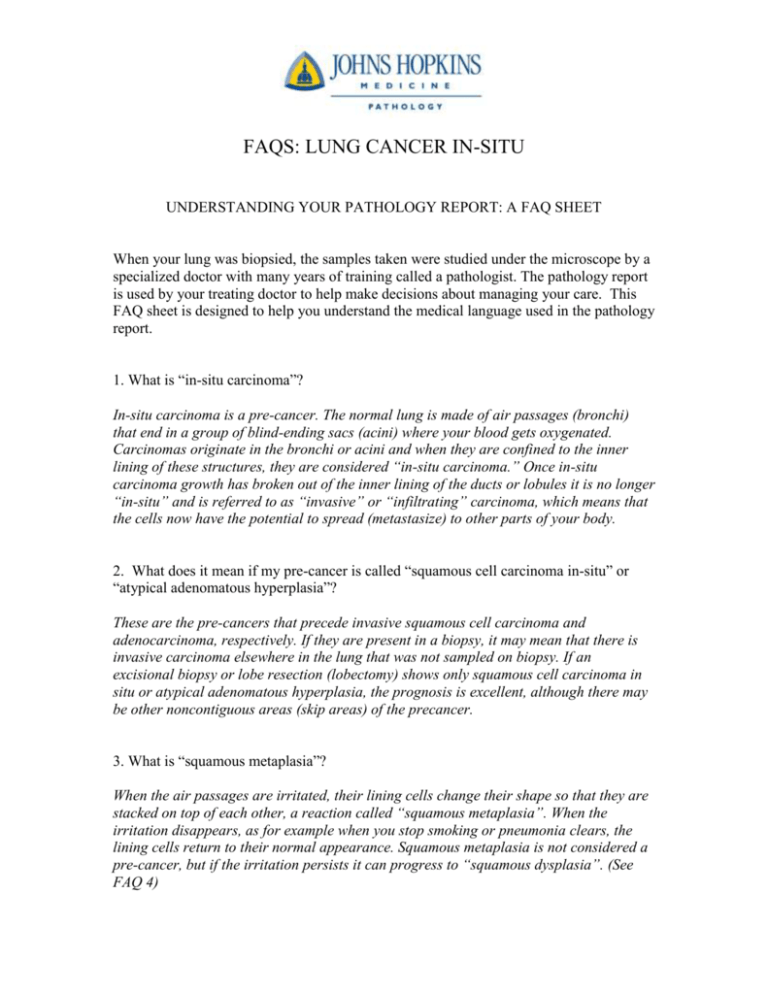
FAQS: LUNG CANCER IN-SITU UNDERSTANDING YOUR PATHOLOGY REPORT: A FAQ SHEET When your lung was biopsied, the samples taken were studied under the microscope by a specialized doctor with many years of training called a pathologist. The pathology report is used by your treating doctor to help make decisions about managing your care. This FAQ sheet is designed to help you understand the medical language used in the pathology report. 1. What is “in-situ carcinoma”? In-situ carcinoma is a pre-cancer. The normal lung is made of air passages (bronchi) that end in a group of blind-ending sacs (acini) where your blood gets oxygenated. Carcinomas originate in the bronchi or acini and when they are confined to the inner lining of these structures, they are considered “in-situ carcinoma.” Once in-situ carcinoma growth has broken out of the inner lining of the ducts or lobules it is no longer “in-situ” and is referred to as “invasive” or “infiltrating” carcinoma, which means that the cells now have the potential to spread (metastasize) to other parts of your body. 2. What does it mean if my pre-cancer is called “squamous cell carcinoma in-situ” or “atypical adenomatous hyperplasia”? These are the pre-cancers that precede invasive squamous cell carcinoma and adenocarcinoma, respectively. If they are present in a biopsy, it may mean that there is invasive carcinoma elsewhere in the lung that was not sampled on biopsy. If an excisional biopsy or lobe resection (lobectomy) shows only squamous cell carcinoma in situ or atypical adenomatous hyperplasia, the prognosis is excellent, although there may be other noncontiguous areas (skip areas) of the precancer. 3. What is “squamous metaplasia”? When the air passages are irritated, their lining cells change their shape so that they are stacked on top of each other, a reaction called “squamous metaplasia”. When the irritation disappears, as for example when you stop smoking or pneumonia clears, the lining cells return to their normal appearance. Squamous metaplasia is not considered a pre-cancer, but if the irritation persists it can progress to “squamous dysplasia”. (See FAQ 4) 4. What is “squamous dysplasia”? Dysplasia is an early form of precancer. It is often separated, by increasing abnormality, into “mild dysplasia”, “moderate dysplasia”, or “severe dysplasia”. The more severe the dysplasia the more it is similar to “squamous cell carcinoma in-situ”. If it is seen on biopsy, it may mean that there is in-situ or invasive carcinoma, not sampled by the biopsy, elsewhere in the lung. 5. What if my report on carcinoma in-situ or atypical adenomatous hyperplasia mentions “margins” or “ink”? When an excisional biopsy is performed, the pathologist coats the outer aspect, or margin, of the specimen with ink, sometimes different colored ink. If precancer extends to the ink, it may mean that it has not been completely removed, depending on what additional specimens the surgeon may have removed. Typically additional treatment (surgery or radiation) is used to get rid of the residual precancer. Management of precancerous lesions at a margin is best discussed with your treating physician. 6. What does it mean if my report also says any of the following terms: “scarring”, “emphysema”, “emphysematous changes”, or “inflammation”? All of these terms are non-cancerous changes that the pathologist sees under the microscope. They are usually of no great importance when seen on a biopsy which also contains cancer. 7. What if my report mentions any of the following: “granulomas”, “methenamine silver (GMS)”, “acid fast bacilli (AFB), or Periodic Acid Schiff (PAS). Granulomas are structures seen under the microscope that are often, although not necessarily, an indication of certain types of infection. Sometimes, infectious organisms can be detected with special stains (i.e. GMS, stains for AFB, and PAS) that the pathologist can apply to the microscopic slides. While most granulomas are infectious, other causes will be considered by your physician, including sarcoidosis, allergic reactions, and “dust” induced lung disease (pneumoconiosis).

